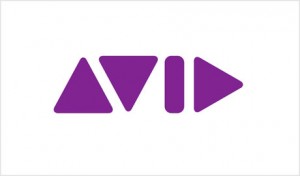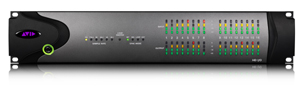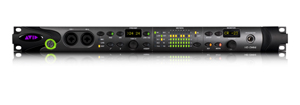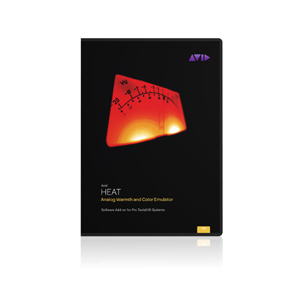The Next Era of Pro Tools: Avid Unveils New Pro Tools HD Series Interfaces and HEAT Software
Avid announced today that it has introduced a new series of hardware and software solutions for Pro Tools|HD. In addition to changing the way Pro Tools|HD users work with their systems, the company is hopeful that these new tools — HD I/O, HD OMNI, HD MADI, and HEAT (Harmonically Enhanced Algorithm Technology) — can help usher in a new era of how users look at the audio side of Avid.
On the hardware side are three new Pro Tools|HD Series interfaces, all of which have been designed to attain a serious upgrade in A-D and D-A conversion quality. According to Avid, the HD I/O, HD OMNI and HD MADI Pro Tools|HD interfaces will enable users to achieve extremely high quality audio via digital audio conversion quality improvements, realize a variety of new configuration options, and experience increased support for open digital standards like the MADI protocol. Features of the new interfaces include advances in design, filtering and clocking and flexible digital I/O connectivity, supporting a variety of formats.
There is also a new soft-knee analog limiter called Curv in the HD OMNI and HD I/O systems, which is intended to cut the time users spend re-recording and editing by tracking hotter signals when recording, preventing distortion when overloading inputs.
HARDWARE DEBUT: HD I/O, HD OMNI, HD MADI
Starting with the HD I/O, Avid is offering its Pro Tools|HD users a system intended to give users highest-quality audio record and playback, with the option of three space-saving configurations — 16×16 analog, 16×16 digital and 8x8x8 analog and digital — in a 2 RU rack mountable interface. Pricing for the system begins at $3,995.
“The HD I/O is a product that’s customer-driven,” says Tony Cariddi, segment marketing manager for Avid audio. “A top concern across the board for independent professionals is sound quality and fidelity, and a big request was for a unit to do 16 I/O, symmetrically.
“The HD I/O does both of those. It will exceed customer expectations for sound quality — we’ve seen that in initial listening sessions with some guests [including Butch Vig]. I think people will respond well to the 16×16 I/O.”
Gearheads will have to give the sleekly designed HD OMNI ($2995) a good hard look. A compact 1RU unit, it provides Pro Tools|HD users with an everything-under-one-roof solution for recording, mixing and monitoring. Its features include state-of-the-art conversion, two world-class mic pre-amps, headphone outputs, a full-featured surround monitor section and a 14×26 channel persistent mixer that functions even when the computer is off, meaning that users can users can listen to CDs, MP3 players, keyboards and drum machines without the need for an additional mixer.
According to Max Gutnik, director of Avid audio product management, the market for the HD OMNI is independent professional and post customers in single-suite environments. “They’re saying, ‘We’d love a solution where we can record, do conversion, monitor and track, and we don’t want to have to buy eight rack spaces of gear in order to do that,’” he explains. “They want a more compact form factor.
“Obviously, this type of product has been done before. We said what we want to be able to provide for this customer is an all-in-one box that doesn’t compromise the quality in any way. That’s the challenge.”
Gutnick acknowledges the difficulties in making a unit that does a lot of different things well, but he contends that Avid has achieved just that with OMNI. “Historically, when one puts a box together that’s a jack-of-all-trades, it’s generally a master of none,” he notes. “So we paid attention to every facet here. It’s a pretty innovative box in that it sounds amazing, functions great, and integrates well into Pro Tools. Listening to the problems of the customer gave us something that does surround, tracking and monitoring in one box.
“So to sum up, the HD OMNI is for someone who wants to be able to accomplish everything they need to do with one box.”
For the hardcore user in MADI-land, HD MADI ($4,995) was designed to enhance workflow and speed up production time for broadcast, live sound and post production sound professionals, offering them the ability to easily connect Pro Tools|HD systems to industry-standard MADI infrastructures, without the need for a format converter. The system features built-in sample rate conversion on all inputs and outputs, so that users can integrate into workflows with multiple sample rates (upstream and downstream) via a single, 64-channel 1 RU rack mountable interface.
MEET THE HEAT
No one ever accused Pro|Tools HD of having that elusive analog warmth, but that just may change with the introduction of the HEAT (Harmonically Enhanced Algorithm Technology) software suite ($495). Knowing that street cred was essential to roll out something like this, Avid recruited no less than digital/analog expert Dave Hill of Crane Song.
With the HEAT software option, Pro Tools|HD systems are intended to come much closer to providing mixers with the warmth and sound of tubes, tape machines and analog consoles, but achieved sans outboard or by managing plug-in changes across multiple tracks. Instead, HEAT is designed to provide the summing yumness of real-world hardware to every track in the Pro Tools mixer using a single, global control.
“HEAT brings the magic, if you will, for Pro Tools mixes,” explains Tom Graham, segment marketing manager, Avid audio. “We recently were at a shootout with Tony Cariddi at (Los Angeles studio) The Village. We spent the day bringing up a mix on an analog Neve board, then A/B’d comparing to a Pro Tools mix summed in the box.
“So it was a Pro Tools mix summed in the Neve with 16 channels of output, and then a Pro Tools mix summed internally with the HEAT option turned on. The response from the people there was very enthusiastic. It’s an exciting thing.”
REBOOTING PRO TOOLS
As Avid rings in the new, they are most definitely ringing out the old. The Digidesign name, a music production mainstay since the mid-80’s (the company was originally founded as Digidrums in 1984), went from being a symbol of innovation and progress in audio to one associated more closely with frustration and aggravation in the years since its acquisition by Avid in 1995.
Even as its flagship product, Pro Tools, achieved ubiquity in professional audio environments of every stripe, Digidesign’s name also became synonymous with poor customer service, questionable upgrade policies and general aloofness. Arguably, Digidesign was a victim of its own success and some accompanying shortsightedness: It had made a product that did enough things so well that everyone bought it, then fell short in supporting its customers sufficiently after the sale.
Now, in the summer of 2010, the Digidesign brand has been completely laid to rest, and Avid wants the new HD products to serve notice that the mistakes of the past won’t be repeated. Welcome, if you will, a company that plans to do a better job of listening to its many, many customers.
“In April of 2009, we announced that we were joining our five businesses — Avid, Digidesign, M-Audio, Sibelius and Pinnacle — under the Avid brand,” Tony Cariddi says. “Creating a single business unit lets us leverage innovation across our audio and video technology portfolio for all of our customers — from the enthusiast to the enterprise.
“This brought about some internal realignment to better support our efforts — we now market to customer segments, rather than by product — and has led to some external changes — a new Avid logo, a new Web site, new packaging, new branding on Avid products, etc…
“After talking with many of our Digidesign customers, we discovered that most people identified more with the product names — such as Pro Tools, VENUE, ICON — instead of the company name. As such, all Digidesign products are now branded ‘Avid’ – for example, Avid Pro Tools; Avid VENUE, and on.
“Another significant change at Avid that has actually been in the works for several years is our concerted focus on the customer and their needs,” Cariddi continues. “The HD Series interfaces and HEAT are a perfect example of customer-driven product development. Our professional users told us that sound quality, ease of use and flexibility were their top priorities and these products are the answer to these requests.
“What we didn’t change, however, is our core Digidesign team of audio experts — the same seasoned professionals that have brought you a myriad of Digidesign audio innovations over the years are also behind the breakthrough hardware and software Avid is talking about today.
“In terms of what to expect from Avid and our Pro Tools line, you’ve seen a taste of what can be accomplished when we apply our collective engineering skills — products like Pro Tools M-Powered, Video Satellite between Media Composer and Pro Tools, and Sibelius integration into Pro Tools. While we can’t offer comments on future development, you’ll continue to see us focused on becoming even more ‘open’ across all of our product lines to give our customers more flexibility and choice when it comes to workflows. We also remain committed to innovation and answering customer requests for new features and solutions.”
Whether all this will result in shorter wait times for technical support calls, or pricing policies that are viewed as fair and reasonable across the board — both huge priorities to Pro Tools’ customer base — remains to be seen. But Avid believes strongly that in answering their users’ other stated desires, company and customer can inch back to loving each other and, yes, making beautiful music together.
“People are saying, ‘What’s different now that Digidesign is Avid?’” Max Gutnik says. “We’re really trying to take what we call an ‘outside-in’ approach. We start with the customer’s problems and needs, and translate that into what the right solution is. I don’t know if that’s always been the case, but it certainly is the philosophy of Avid: solving customer needs.
“So we’ve solved customer problems, what does that mean? We want to make sure people know that means we’re providing the best product money can buy, built with customer input. Between the I/O quality and HEAT, we’re really trying to change the game around expectations of our systems.”
“Clearly, the theme for this launch is sound quality,” Cariddi adds. “That was overwhelming, the strongest feedback we received from our customers is that sound quality is the most important thing to them.
“We’re really addressed that with these solutions. They let people work the way they want to work: HD OMNI, an all-in-one unit, HD MADI and the sound quality and flexibility of building HEAT into the Pro Tools mixer. The conversion is the underlying theme that connects all of this together.”
— David Weiss











Jonathan S. Abrams
August 19, 2010 at 4:54 pm (14 years ago)I hope AVID truly is listening. If anyone at AVID is reading this, I would like something that I believe other HD customers are asking for as well. I would like a SuperAccel card. What is a SuperAccel card? It is an HD2|Accel system on a single PCIe card. This will allow me to free up a PCIe slot for a network card (Fiber Channel, 10GigE, etc.) which will then allow me to connect Pro Tools to a SAN (Xsan, EditShare, etc.). Which brings up the next thing we need you to do after the SuperAccel card, which is to officially support working with any SAN volumes.
Thanks for reading!
Jonathan S. Abrams
August 19, 2010 at 9:54 am (14 years ago)I hope AVID truly is listening. If anyone at AVID is reading this, I would like something that I believe other HD customers are asking for as well. I would like a SuperAccel card. What is a SuperAccel card? It is an HD2|Accel system on a single PCIe card. This will allow me to free up a PCIe slot for a network card (Fiber Channel, 10GigE, etc.) which will then allow me to connect Pro Tools to a SAN (Xsan, EditShare, etc.). Which brings up the next thing we need you to do after the SuperAccel card, which is to officially support working with any SAN volumes.
Thanks for reading!
ott0bot
August 20, 2010 at 4:25 pm (14 years ago)This is great and all for HD users, the Omni is a great idea, and props for stepping up the conversion qualiy. But how soon before Pro Tools LE includes delay compesation that will allow it’s users to mix out of the box with using MellowMuse or nudging everything. Some people can’t drop 12k on an interface and PCI cards, but would like to work in a professional software that actaually competes with the other DAW’s on the market. I love PT’s workflow, but this is killing me. Come on AVID!!!